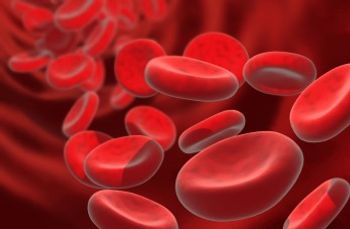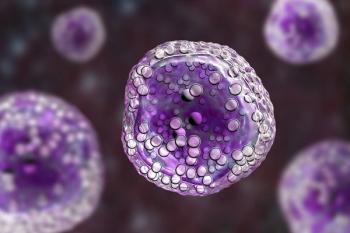
- ONCOLOGY Vol 16 No 3
- Volume 16
- Issue 3
Treatment of Acquired Factor VIII Deficiency With Rituximab
At the 2000 American Society of Hematology meeting, we reported the successful treatment of a patient with acquired hemophilia using rituximab (Rituxan). This patient has required no therapy over the past year and has suffered no further hemorrhages. A June 2001 factor VIII level was 35%, and a factor VIII inhibitor level could not be analyzed due to the high level of factor VIII. Since then, three more patients with acquired factor VIII deficiency have received rituximab therapy at the University of Iowa, and are discussed below.
At the 2000 American Society of Hematology meeting, we reported thesuccessful treatment of a patient with acquired hemophilia using rituximab(Rituxan). This patient has required no therapy over the past year and hassuffered no further hemorrhages. A June 2001 factor VIII level was 35%, and afactor VIII inhibitor level could not be analyzed due to the high level offactor VIII. Since then, three more patients with acquired factor VIIIdeficiency have received rituximab therapy at the University of Iowa, and arediscussed below.
F.T. is a 78-year-old white female who required a 6-week hospitalizationstarting in March 2001 for treatment of soft-tissue hemorrhages associated withher hemophilia. She was treated with recombinant human coagulation factor VIIa (NovoSeven)and received four weekly doses of rituximab therapy at 375 mg/m²/wk. Prior tothe rituximab therapy her factor VIII level was 2%, with a factor VIII inhibitorlevel of 56 Bethesda units. After therapy, she was admitted to the hospital forquestionable gastrointestinal hemorrhage and developed an arthritis syndromethat required prednisone therapy. The patient has had no further hemorrhages. Asof August 1, 2001, her factor VIII level was measured at 150%, with a factorVIII inhibitor level that could not be analyzed.
R.P. is a 73-year-old white male with a history of acquired factor VIIIdeficiency that had spontaneously resolved in 1996. In January 2001, recurrentsoft-tissue bleeding occurred. In April 2001, he received a 4-week course ofrituximab therapy (375 mg/m²/wk). His factor VIII level prior to therapy was 2%,with a factor VIII inhibitor level of 19 Bethesda units. Eight weeks aftercompletion of the therapy, his factor VIII level had risen to 3% and his factorVIII inhibitor level had fallen to 2.8 Bethesda units.
N.Y. is a 79-year-old white female who was diagnosed with acquired hemophiliain January 2001. She required NovoSeven for soft-tissue hemorrhages. Thispatient is now 2 weeks out from completion of a 4-week course of rituximabtherapy (375 mg/m²/wk). She has required no further therapy for hemorrhage, anda follow-up factor VIII level has not yet been obtained.
CONCLUSION: These four cases provide further evidence that rituximab appearsto have a role in the treatment of acquired factor VIII deficiency. It is ouropinion that the therapy is safe and effective, especially when compared toprevious therapies (glucocorticoids and cytotoxics). Our conclusions are limitedby the small number of patients, but they strongly suggest that further study iswarranted.
Articles in this issue
almost 24 years ago
Single-Agent Rituximab in Early-Stage Chronic Lymphocytic Leukemiaalmost 24 years ago
Recruitment for Trial of Adjuvant Trastuzumab Under Wayalmost 24 years ago
Rituximab in the Treatment of Acquired Factor VIII Inhibitorsalmost 24 years ago
Support for New Medicare Pay Formulaalmost 24 years ago
Irinotecan-Containing Regimen Improves Survival in Small-Cell Lung CancerNewsletter
Stay up to date on recent advances in the multidisciplinary approach to cancer.


















































































